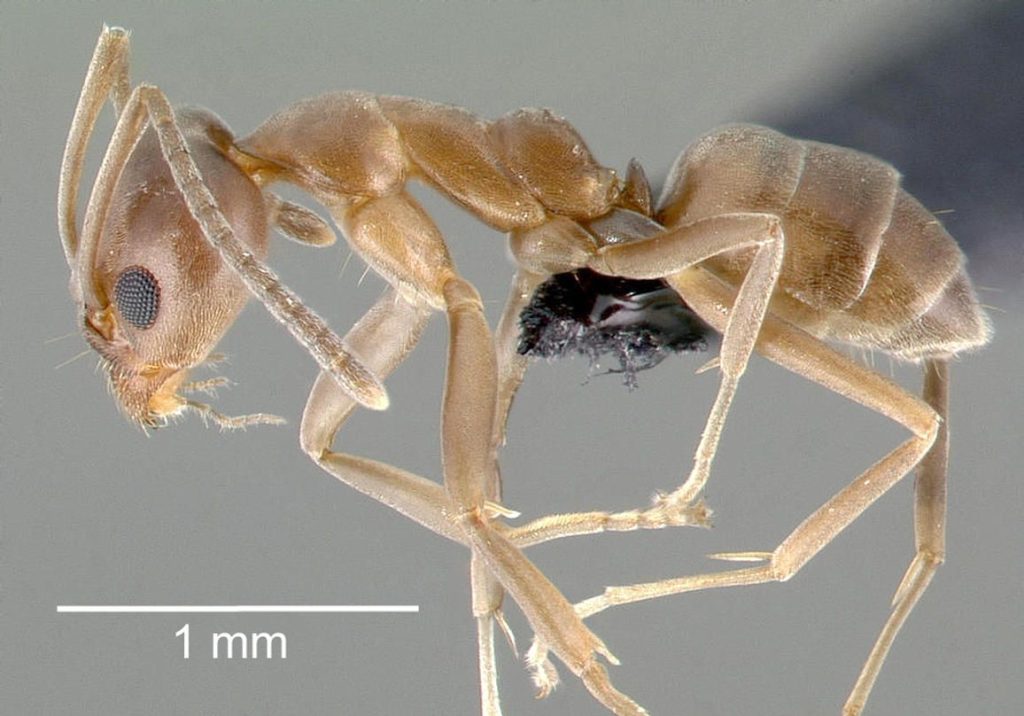In Florida, we have plenty of native critters trying to find their way into our homes – cockroaches, mosquitoes, lizards, squirrels, mice, and even alligators and bears every now and again. So, we don’t really need any more non-native critters to worry about, but we do. The Argentine ant is one of these non-native nuisances that can be quite difficult to control.
The Argentine ant is from South America and has become a pest worldwide. Although these ants don’t sting or bite, they can be a major nuisance in the home as they search for food and water. A unique feature that makes these ants especially difficult to deal with is that they form multi-queen colonies that can form a network of interrelated colonies. Unlike other ant colonies that may compete with each other, Argentine ants are able to spend less time defending their nests and more time looking for resources. These ants are also really small, with the workers only about 2.2 to 2.6 mm (around 1/10 of an inch). The Argentine ant emits a musky odor when crushed, helping to identify it among other small pest ants.

These minute, cooperative ants can quickly invade a structure looking for food and water, especially when it warms up. At 70°F, it takes 25 days for the pupa to change into an adult compared to only 8 days at 86°F. This ability to reproduce quickly is a trait shared by most invasive species, whether plant or animal.
While not a health threat to humans, they are very annoying pest. In the home, they are attracted to sugars and oils and like to hide in the soil of potted houseplants. Outdoors, they nest in mulch, leaves, and rotting logs. You can often find them “tending” to insects on your outdoor landscape plants. The ants eat the sugary feces of sap-feeding insects, called honeydew, and provide these insects protection in exchange. In citrus groves, the Argentine ant has been known to help the Asian citrus psyllid better compete against predators, allowing this other invasive species to potentially spread citrus greening.

To help control the Argentine ant, you need to start with the perimeter of the home. It’s best to keep a 2’ barrier around the home free of leaves, mulch, woody debris, and landscape plants. This minimizes areas to nest near the home. If they begin to enter the home, place ant bait stations or gel baits along their trail. Argentine ants tend to like sweet baits. Broadcast pesticide spray treatments are not as effective because the nest is usually located far enough below ground where the pesticides can’t penetrate. Pesticide powder formulations are available to treat small crevices. These ants are difficult to control and you may want to consider hiring a professional pest management company for backup. For more information on the Argentine ant, it’s identification and control methods, please see the UF/IFAS Argentine Ant Factsheet. For any questions on ants or other structural pests, contact your local county extension office.
- When to Worry About Your Citrus During Cold Weather - December 18, 2025
- A Tale of Two Hoses - November 13, 2025
- Anthracnose and Aster Yellowing Diseases Recently Diagnosed - August 28, 2025
